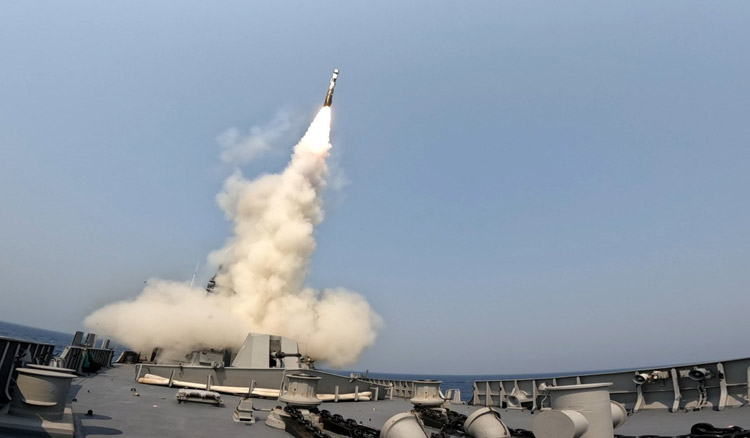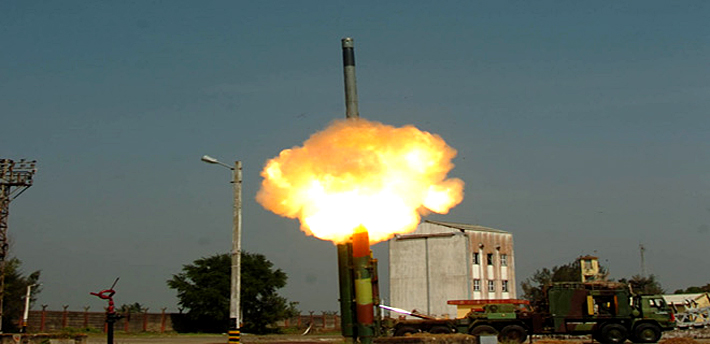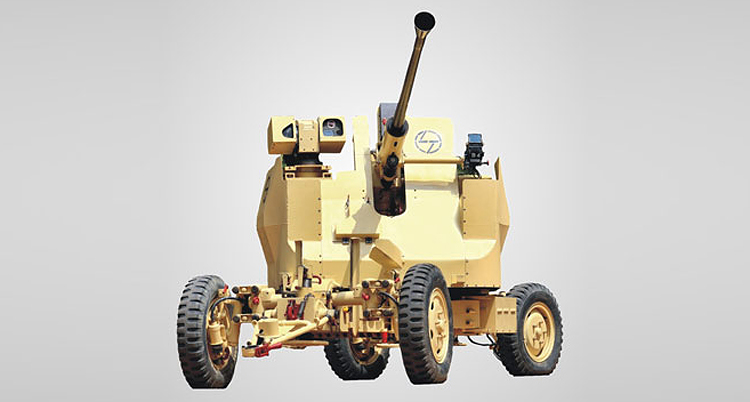INDIAN ARMED FORCES CHIEFS ON OUR RELENTLESS AND FOCUSED PUBLISHING EFFORTS

The insightful articles, inspiring narrations and analytical perspectives presented by the Editorial Team, establish an alluring connect with the reader. My compliments and best wishes to SP Guide Publications.

"Over the past 60 years, the growth of SP Guide Publications has mirrored the rising stature of Indian Navy. Its well-researched and informative magazines on Defence and Aerospace sector have served to shape an educated opinion of our military personnel, policy makers and the public alike. I wish SP's Publication team continued success, fair winds and following seas in all future endeavour!"

Since, its inception in 1964, SP Guide Publications has consistently demonstrated commitment to high-quality journalism in the aerospace and defence sectors, earning a well-deserved reputation as Asia's largest media house in this domain. I wish SP Guide Publications continued success in its pursuit of excellence.
- Operation Sindoor: Resolute yet Restrained
- India’s Operation Sindoor Sends a Clear Message to Terror and the World – ‘ZERO TOLERANCE’
- Japan and India set forth a defence cooperation consultancy framework, talks on tank and jet engines
- Terrorist Attack in Pahalgam in Kashmir: Unfolding a long surgical war against PAK
- Lt General Pratik Sharma takes over Command of Indian Army's Northern Command
Upgrading Armed Forces Combat Capabilities
Bolstering India's war fighting ability with precision, power and innovation
 |
The Author is Former Director General of Information Systems and A Special Forces Veteran, Indian Army |

On February 21, 2024, the Cabinet Committee on Security (CCS), headed by Defence Minister Rajnath Singh, approved four major defence deals worth around ₹35,000 crore to bolster combat capabilities of the Armed Forces. These included the largest-ever contract for the BrahMos supersonic cruise missiles. The almost ₹19,500 crore approval is for over 220 extended-range BrahMos missiles, with a strike range of 450-km, to arm frontline warships of the Indian Navy, the contract for which is to be inked in this month – March 2024.
BrahMos missiles (jointly manufactured with Russia in India) with the speed of Mach 2.8, are the prime conventional (non-nuclear) precision-strike weapon of the Indian Armed Forces, with contracts worth over ₹38,000 crore already inked over the years. Almost 15 frontline warships are already armed with BrahMos missiles, including the latest destroyers like INS Visakhapatnam, INS Mormugao and INS Imphal. All new destroyers and frigates will also have the BrahMos missiles. They include the seven 6,670-tonne stealth frigates being constructed under Project-17A at an overall cost of ₹45,000 crore, which are slated for delivery in the 2024-2026 timeframe. The 800-km variant of BrahMos missile is also under-development.
The Cabinet Committee on Security (CCS) approved four major defence deals worth around ₹35,000 crore to enhance combat capabilities, including the largest-ever contract for BrahMos supersonic cruise missiles
The Indian Air Force (IAF) is also looking to arm another 20-25 Sukhoi-30 MKI fighters with the BrahMos after getting the first lot of 40 jets modified by Hindustan Aeronautics Limited (HAL) to carry the missile. This will enable the modified Sukhoi to undertake long-range strikes against high-value targets. The Army also plans to induct more BrahMos regiments to add to its existing four.

The CCS approval on February 21 included new advanced engines for the existing MiG-29 fighters in the Indian Air Force (IAF) fleet, which will be manufactured by Hindustan Aeronautics Limited (HAL) with Russian collaboration at a cost of about ₹5,300 crore. The two other projects approved (each costing about ₹5,000 crore) are for high-powered radars and new versions of the L-70 air defence guns, both of which will be manufactured by Larsen & Tubro (L&T) with some foreign technology.
The Indian Air Force (IAF) plans to arm another 20-25 Sukhoi-30 MKI fighters with BrahMos missiles, enabling long-range strikes against high-value targets
Concurrently, there is news that the IAF’s Sukhoi Su-30 MKI fleet is to be upgraded with a mission control system, new radars, and electronic warfare weapons in a major collaboration with the indigenous private sector. The upgrade is expected to cost ₹60,000 crore. HAL has been assigned the lead role for the upgrade, with support from the Defence Research and Development Organisation (DRDO) and majority of the components required will be sourced from private companies. The project was approved by the Ministry of Defence (MoD) in 2023.

Majority of upgrades will involve indigenous systems that are to be fitted onboard the platform to give it a combat edge. This includes a new indigenous radar system designed to detect and engage targets at much larger distances, addressing the limitations of the radar technology in older jets that would get outperformed by systems used by adversaries. The first phase will also equip the aircraft with a new Electronic Warfare System to jam incoming threats and disrupt enemy communications, alongside new domestic Infra Red (IR) Search and Track systems to improve engagement with air-to-air and air-to-ground targets.
The CCS approval on February 21 included new advanced engines for existing MiG-29 fighters in the Indian Air Force fleet, manufactured by Hindustan Aeronautics Limited (HAL) with Russian collaboration at a cost of about ₹5,300 crore
Around 90 of Sukhoi jet fighters are slated for the initial upgrade phase, to be conducted entirely within India. India procured 272 of these fighter jets from Russia, which are central to the Air Force's operational capabilities. An additional acquisition for 12 Sukhoi fighter jets was approved in 2023 for ₹11,000 crore, with HAL manufacturing these with over 50 per cent indigenous components. According to CMD of HAL C.B. Ananthakrishnan, "The upgrade will see significant private sector participation, with HAL as the lead integrator."

Overall, the IAF has put the project to upgrade its aircraft on a fast track. This is planned in two phases. The initial phase focuses on installing new avionics and radars, while the second phase centres on enhancing the flight control systems. Several Russian-origin systems in Indian fighter jets are being replaced with indigenous alternatives.
The IAF's Sukhoi Su-30 MKI fleet is set to undergo a major upgrade, including a mission control system, new radars, and electronic warfare weapons, in collaboration with the indigenous private sector, expected to cost ₹60,000 crore
The majority of the effort revolves around integrating indigenous systems onto the platform to fortify the fighter aircraft’s combat capabilities. This includes the development of a new indigenous radar, enabling the aircraft to detect and strike targets from significantly greater distances. The Air Force had expressed concerns about the radar in older generation jets, which was often outperformed by opponents.





